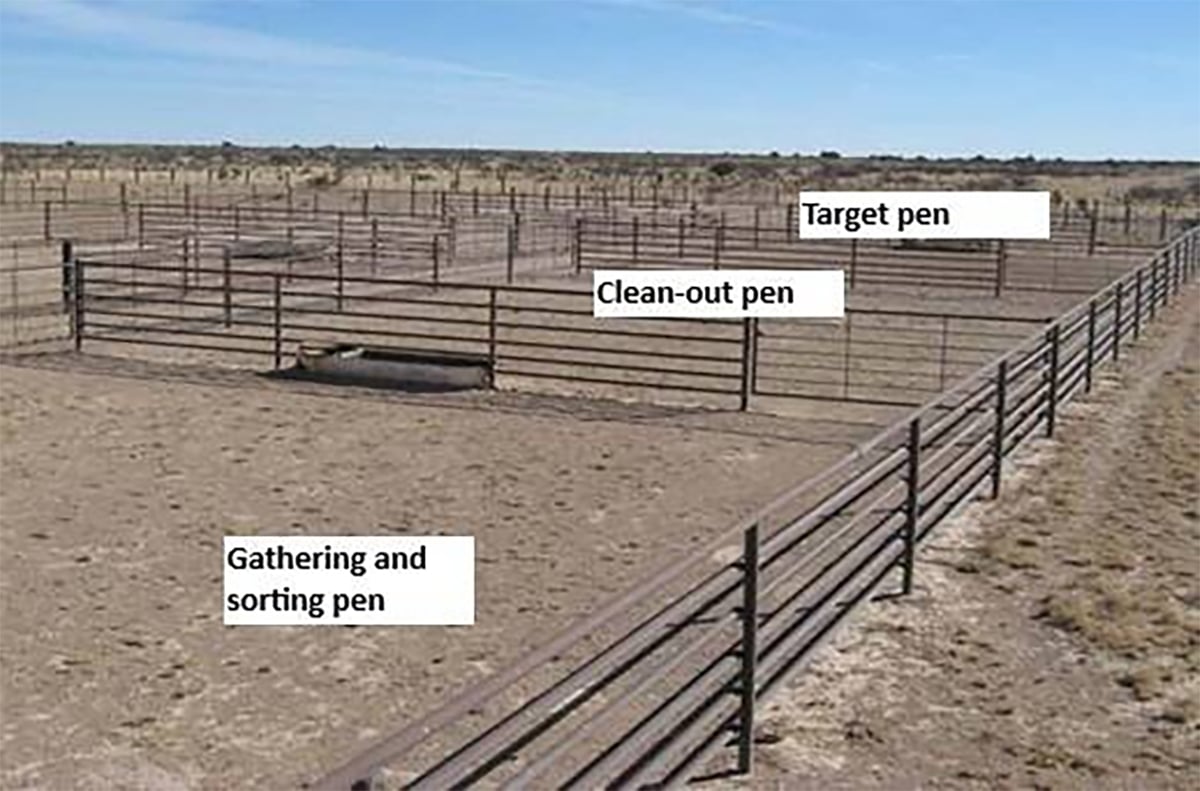The adage “the more we look the more we find” is accurate when it comes to internal parasites.
It’s only when horses have a tremendous burden of internal worms or we see the odd tapeworm section shed in the manure that we know that internal worms are a problem.
Cattle shed parasite eggs in low numbers, which means an accurate fecal count on several animals in the herd is the only way to determine the parasite burden.
Animal health technicians at veterinary clinics are trained in this procedure.
Read Also

Teamwork and well-designed handling systems part of safely working cattle
When moving cattle, the safety of handlers, their team and their animals all boils down to three things: the cattle, the handling system and the behaviour of the team.
Collect several golf ball-sized individual samples and take them to a veterinarian for fecal analysis. Most clinics do the analysis in house, or they can be sent to several good labs across Canada where the test can be quickly performed.
Parasites can be the root cause of many problems in cattle, which may not be obvious at first. Affected cattle may not appear sick or even have rough hair coats.
Most people can’t tell by looking at them if cattle are 20 to 30 pounds heavier. I know I can’t.
However, production trials studying the effects of deworming show that treated cattle are 20 to 30 lb. heavier than untreated cattle. A procedure producing that weight gain is a wise investment.
Parasites also affect the immune system and increase susceptibility to respiratory disease. Feed conversion is poor because parasites rob cattle of nutrients. Older trials in the United States found that reproductive performance was affected in breeding heifers.
You would think parasites robbing nutrients would make the animals want to eat more, but it has also been proven that heavily parasitized cattle don’t feel good and appetite is suppressed, thus worsening the problem of weight gain.
Parasites affect all species. Fortunately, I seldom see clinically affected cattle or camelids with internal parasites. They usually have subclinical effects with production losses as the main consequence.
However, horses, goats, and especially sheep and bison can be severely affected to the point of causing death. If you raise any of these species, have a vet check them periodically.
Ivomec (ivermectin) revolutionized parasite treatment when it came onto the market. Western Canada, especially, had a problem with lice.
Older medications controlled lice and warbles but did nothing for internal parasites. The Avermectin products, which followed, controlled all three.
Although expensive at first, producers could see the difference in their cattle and embraced this new medication, especially when it became a pour-on. Ease of administration was paramount. Cattle could be treated quickly and conveniently, and twice yearly applications were often adopted as the price de-creased.
However, we became complacent and stopped checking manure samples for worms.
As well, 25 years have passed and the pour-on products have become less effective. They still work well on lice, but are becoming less effective against internal worms, which have developed resistance.
In some cases, other animals were licking off the product.
The bottom line is that the standard control doesn’t work nearly as well as it did a few years ago. This was first noticed in the United States close to 10 years ago, but it was felt at the time that our cold Canadian winters killed lots of the parasites on pasture so worms would not become a major problem.
That is not the case, and in Eastern Canada, where problems surfaced earlier, different strategies have been developed for deworming.
This often includes administering the internal dewormer fenbendazole, or Safeguard, either orally with a hook applicator or mixed in the feed over several days.
Another alternative is to add it to the minerals over several days. Safeguard works by direct contact with the parasites and kills them quickly. This combination will reduce external and internal parasites to zero.
The effectiveness of pour-on products varies greatly, ranging from a low of almost totally ineffective to as high as 90 percent. Many of the products range from 30 to 70 percent effective, which means many worms are left to reduce production and recontaminate the pastures next spring.
Calves and yearlings are the most sensitive to parasites. Cows develop some immunity over time, but parasites can affect milk production, reduce immune response to vaccines and suppress appetite.
It’s important to collect manure samples from pastures this summer for analysis, even if you used an endectocide last fall or at turnout. Use Safeguard for internal worms over the summer if worm burdens are significant.
Your veterinarian can also devise a strategy to decrease worm burdens during summer and start cleaning up the parasites on pastures.
This may involve letting cattle pasture for a time and then deworming cattle with a mineral.














